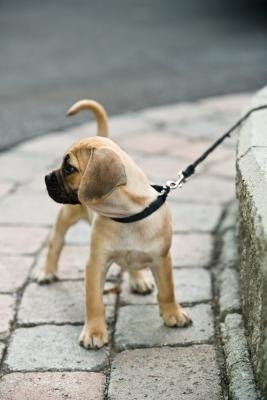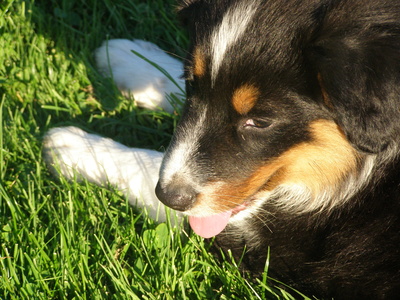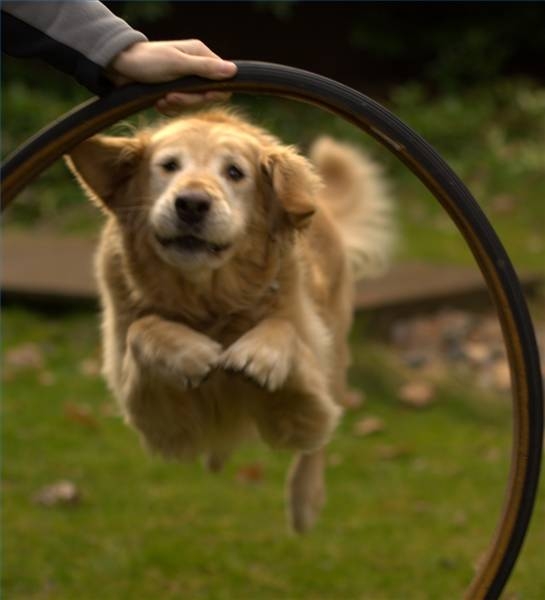A training collar is a useful tool for obedience training your dog. It goes by various names, some being a pinch collar, slip collar, choke collar or even a choke chain. Essentially it goes round the animals neck, and, when attached to a lead or leash, is an effective way for you to maintain control of the dog.
Naturally a training collar will not be effective if it is not used correctly so that you can modify the dogs behavior but also ensure that it is not hurt or injured by the collar. This short article will address 5 issues about using a dog training collar effectively whilst keeping your dog safe.
1. Selecting the right size of collar " The collar must be just the right fit for your dog. It must be a snug fit but not too loose or too tight. Obviously a collar that is too tight has the potential to hurt your pet or choke it at the slightest pressure. A collar that fits to loosely will not give you the fast control that you may need in certain situations and will make the collar ineffective.
Start by taking a measure of your dog's neck. Then, add around 5 centimeters (2-3 inches) to that measurement. This will give some play to the collar so that it can fit comfortably over the dogs head. Generally a dog training collar will come in 5 centimeter (2 inch) increments.
2. Fitting the training collar on the dog correctly " A dog training collar will come with plenty of instructions for fitting the collar and using it effectively. It is advisable to read these when placing the collar on your dog for the first time. They will detail how to fit the collar correctly and prevent an sort of harm coming to your pet in the process.
3. Use the dog training collar properly " Remeber that the collar is not a way to punish the dog for anything that takes your fancy. It is really a way to communicate with your dog not to confuse it. Use the collar consistently and in a focused manner. Make sure that the dog understands why pressure is being applied to the collar through the leash. Eventually it will understand that the collar and leash are a useful tool for developing a relationship with it's owner.
4. Take into account the link size and weight of the training collar. They should reflect the type of dog that will be wearing the collar. So if you had a Bull Mastiff then you would want a heavy collar with larger links. If you had a toy Poodle then the wight and link size would be considerably less. Normally, the chain documentation or packaging will indicate the range or size of dog suitable to the type of collar.
5. Make sure of the positioning of the collar and lead on the dogs neck. For instance, the lead should be fixed to the collar at the top of the dogs neck. This will transfer any pressure you exert on the lead to the dog efficiently and make it understand quicker. It will also ease the pressure quickly once you ease off assuming that the dog has stopped behaving badly.
Finally, think about the durability of the materials that are used to make the training collar and leash. They will be used a lot and will be subject to wear and tear so you want something that will last the distance. You don't want the leash to snap or the collar to break in the middle of your dog obedience training program.

 How to Potty Train Puppy on a Puppy Pad
How to Potty Train Puppy on a Puppy Pad
How to Potty Train Puppy on a Puppy Pad
How to Potty Train Puppy on a Puppy Pad
 How to Train a 7-Month-Old Puppy
How to Train a 7-Month-Old Puppy
How t
How to Train a 7-Month-Old Puppy
How to Train a 7-Month-Old Puppy
How t
 The Best Ways to Potty Train a Puppy
The Best Ways to Potty Train a Puppy
T
The Best Ways to Potty Train a Puppy
The Best Ways to Potty Train a Puppy
T
 Indoor Grass & Sod for Potty Training Puppies
Indoor Grass & Sod for Potty Training Pupp
Indoor Grass & Sod for Potty Training Puppies
Indoor Grass & Sod for Potty Training Pupp
 Comparisons of Dog Training Methods
Comparisons of Dog Training Methods
Co
Comparisons of Dog Training Methods
Comparisons of Dog Training Methods
Co